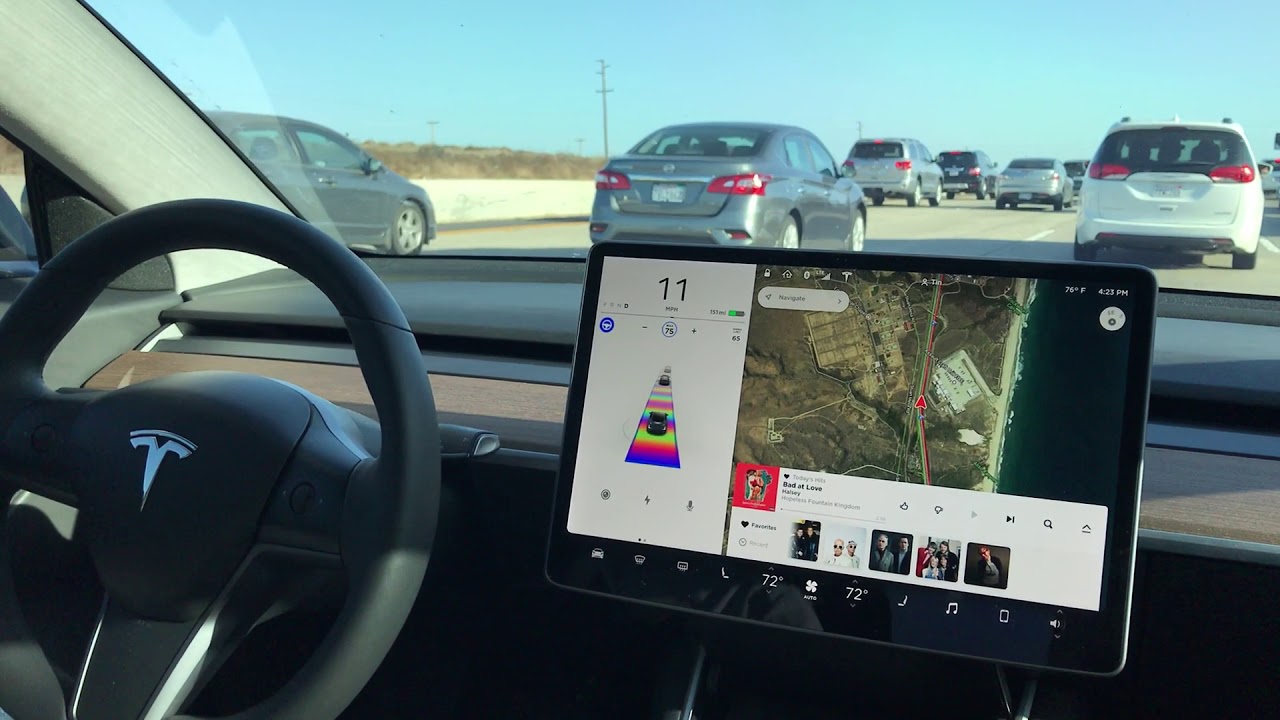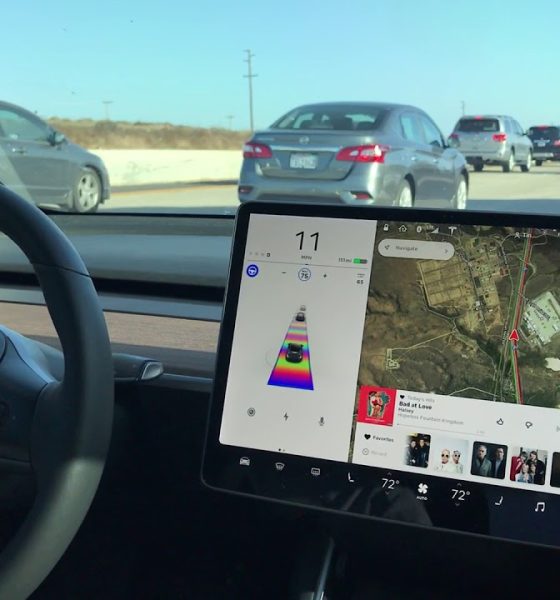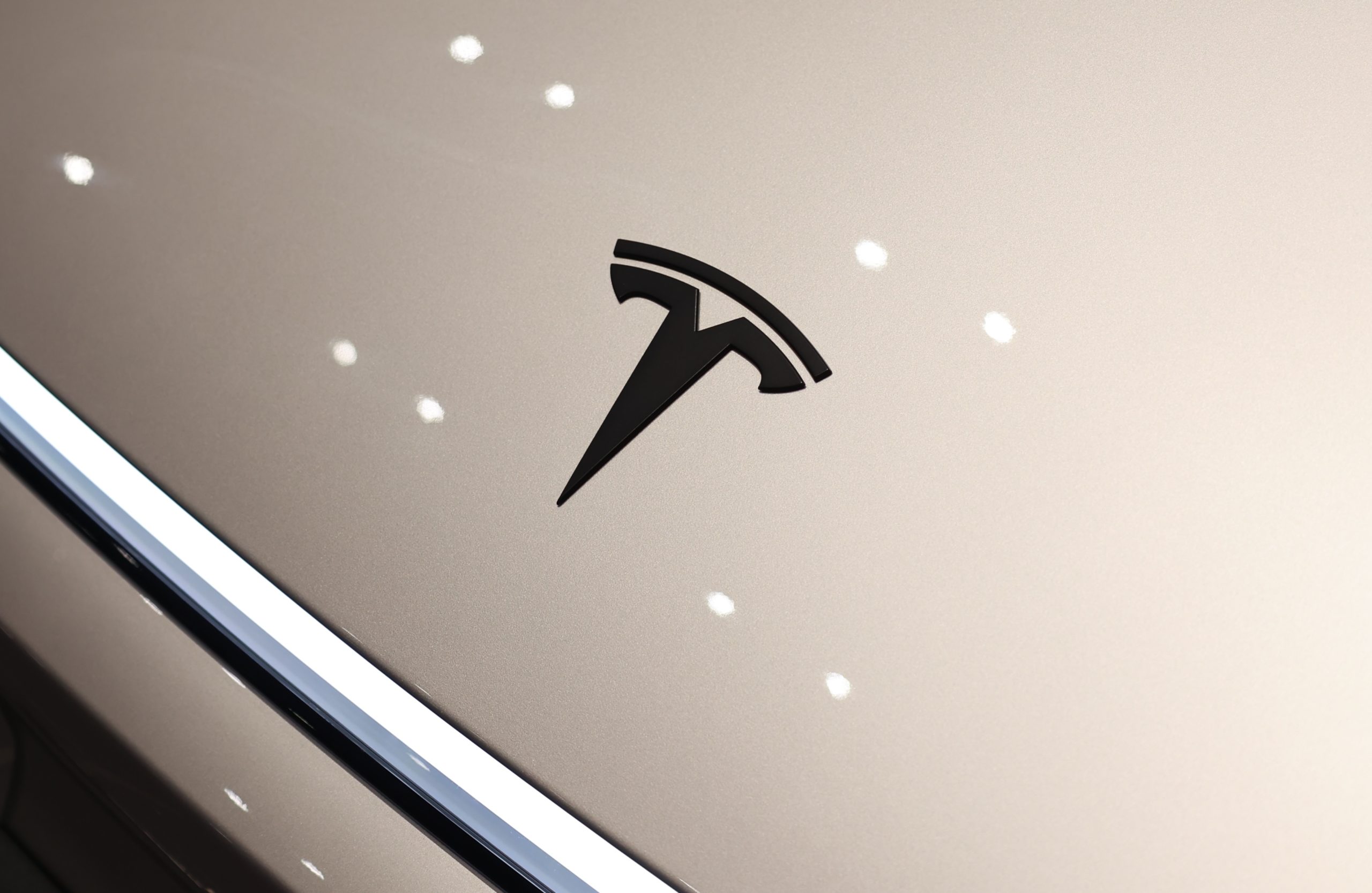

Investor's Corner
Tesla at $420 is a bargain considering its Autopilot data is key to a self-driving future
Questions continue to swirl around the fate of Tesla stock (NASDAQ:TSLA) as the market waits for updates about Elon Musk’s initiative to make the company private. Tesla’s privatization, provided that it does go through, will be the largest one in history, amounting to around $70 billion at Musk’s target of $420 per share. While this amount is substantial, $420 is actually a pretty good deal for Tesla’s would-be funding partners, considering the volume of Autopilot data the company has gathered from its Model S, Model X and Model 3 fleet.
Tesla’s possible privatization has caused wild swings in Tesla’s stock price, though not too far a departure from its usual volatility. Upon Musk’s announcement, shares climbed up 11%, before falling back as reservations emerged from critics about the plausibility of the company’s privatization. On Thursday’s after-hours, Tesla stock recovered some of its losses as the company’s board of directors issued a statement stating that they would formally review Musk’s plans.
Gene Munster, Managing Partner at Loup Ventures believes that there is more than a 50% chance that Tesla would become a private company. Munster noted that while concerns about the possible repercussions of Musk’s go-private Twitter announcement might affect the stock, the effects would only be felt at the very short-term. Ultimately, the venture capital firm believes that neither Tesla nor Elon Musk is at legal risk, especially since the company stated on a 2013 Form 8-K that social media might be used as an outlet for disseminating company information. Loup Ventures also estimates that Tesla would need around $25-$30 billion to take the electric car and energy company private.
If Loup Ventures’ calculations prove accurate, the entities providing the company with the funding to go private would be getting quite a deal at $420 per share. Apart from Tesla’s electric car and energy business — both of which are growing at an immense rate — investors would also be buying into a company that holds what could very well be automotive world’s most extensive amount of real-world driving data. As of July, a report from MIT’s Lex Fridman estimated that Tesla had acquired around 1.2 billion miles on Autopilot and approximately 7.8 billion miles in Autopilot “Shadow Mode.”
In comparison, Waymo’s fleet of vehicles have driven a total of 5 million real-world miles in self-driving mode and an additional 5 billion miles in simulation as of May this year. GM Cruise, another leader in self-driving technology, does not release the numbers of its fleet, but accident and disengagement reports based on autonomous miles driven provide a rough estimate of the miles Cruise’s vehicles have traveled so far. Between June 2015 and November 2017, the California Department of Motor Vehicles estimated that GM Cruise’s self-driving cars covered a total of 141,691 miles in CA. Morgan Stanley analyst Adam Jonas estimates Waymo to be worth $175 billion. GM Cruise, on the other hand, is valued at $11.5 billion after securing more funding from Softbank’s Vision Fund earlier this year.
Tesla’s development of self-driving technologies has taken a backseat in the media coverage of the company, particularly during the past year as the company struggled with the Model 3 ramp. Regardless of this, Keith Wright, a professor from Villanova University, notes that Elon Musk’s decision to invest heavily in AI would likely pay off soon. Among the participants in the self-driving race, Tesla is the company with the most real-world experience. Elon Musk once noted that it would likely take around 6 billion real-world miles before regulators would approve self-driving technology. So far, Tesla is the company closest to that mark.
Tesla’s focus on data gathered from real-world miles was emphasized by Nidhi Kalra, a senior information scientist for the RAND Corporation, a nonprofit research organization. According to the information scientist, simulations such as the ones used by Waymo to train its fleet of autonomous vehicles are a “simplification” of the real world.
“The problem with any simulator is that it’s a simplification of the real world. Even if it stimulates the world accurately, if all you’re simulating is a sunny day in Mountain View with no traffic, then what is the value of doing a billion miles on the same cul-de-sac in Mountain View? I’m not saying that’s what anyone’s doing but without that information we can’t know what a billion miles really means. Real-world miles still really, really matter. That’s where, literally, the rubber meets the road, and there’s no substitute for it,” Kalra said.

And Tesla is just getting started. In Tesla’s Q2 2018 earnings call, the company provided an update on its efforts to develop its own self-driving hardware. According to Pete Bannon, who leads the development of Hardware 3, the company’s new hardware is different from the industry standard.
“We did a survey of all of the solutions that were out there for running neural networks, including GPUs. We went and talked to other people like at ARM that were building embedded solutions for running neural networks. And pretty much everywhere we looked, if somebody had a hammer, whether it was a CPU or a GPU or whatever, they were adding something to accelerate neural networks. But nobody was doing a bottoms-up design from scratch, which is what we elected to do.”
“We had the benefit of having the insight into seeing what Tesla’s neural networks looked like back then and having projections of what they would look like into the future, and we were able to leverage all of that knowledge and our willingness to totally commit to that style of computing to produce a design that’s dramatically more efficient and has dramatically more performance than what you can buy today.”
Tesla could very well be approaching its most significant turning point in years. Regardless of whether Tesla becomes private or not, one thing seems sure — once Tesla starts rolling out its first full self-driving features, and once Hardware 3 makes it to the company’s fleet, leaders in the self-driving industry would probably be forced to recognize the presence of a new, possibly dominant player.
Disclosure: I have no ownership in shares of TSLA and have no plans to initiate any positions within 72 hours.

Investor's Corner
Tesla wins $508 price target from Stifel as Robotaxi rollout gains speed
The firm cited meaningful progress in Tesla’s robotaxi roadmap, ongoing Full Self-Driving enhancements, and the company’s long-term growth initiatives.

Tesla received another round of bullish analyst updates this week, led by Stifel, raising its price target to $508 from $483 while reaffirming a “Buy” rating. The firm cited meaningful progress in Tesla’s robotaxi roadmap, ongoing Full Self-Driving enhancements, and the company’s long-term growth initiatives.
Robotaxi rollout, FSD updates, and new affordable cars
Stifel expects Tesla’s robotaxi fleet to expand into 8–10 major metropolitan areas by the end of 2025, including Austin, where early deployments without safety drivers are targeted before year-end. Additional markets under evaluation include Nevada, Florida, and Arizona, as noted in an Investing.com report. The firm also highlighted strong early performance for FSD Version 14, with upcoming releases adding new “reasoning capabilities” designed to improve complex decision-making using full 360-degree vision.
Tesla has also taken steps to offset the loss of U.S. EV tax credits by launching the Model Y Standard and Model 3 Standard at $39,990 and $36,990, Stifel noted. Both vehicles deliver more than 300 miles of range and are positioned to sustain demand despite shifting incentives. Stifel raised its EBITDA forecasts to $14.9 billion for 2025 and $19.5 billion for 2026, assigning partial valuation weightings to Tesla’s FSD, robotaxi, and Optimus initiatives.
TD Cowen also places an optimistic price target
TD Cowen reiterated its Buy rating with a $509 price target after a research tour of Giga Texas, citing production scale and operational execution as key strengths. The firm posted its optimistic price target following a recent Mobility Bus tour in Austin. The tour included a visit to Giga Texas, which offered fresh insights into the company’s operations and prospects.
Additional analyst movements include Truist Securities maintaining its Hold rating following shareholder approval of Elon Musk’s compensation plan, viewing the vote as reducing leadership uncertainty.
@teslarati Tesla Full Self-Driving yields for pedestrians while human drivers do not…the future is here! #tesla #teslafsd #fullselfdriving ♬ 2 Little 2 Late – Levi & Mario
Investor's Corner
Tesla receives major institutional boost with Nomura’s rising stake
The move makes Tesla Nomura’s 10th-largest holding at about 1% of its entire portfolio.

Tesla (NASDAQ:TSLA) has gained fresh institutional support, with Nomura Asset Management expanding its position in the automaker.
Nomura boosted its Tesla holdings by 4.2%, adding 47,674 shares and bringing its total position to more than 1.17 million shares valued at roughly $373.6 million. The move makes Tesla Nomura’s 10th-largest holding at about 1% of its entire portfolio.
Institutional investors and TSLA
Nomura’s filing was released alongside several other fund updates. Brighton Jones LLC boosted its holdings by 11.8%, as noted in a MarketBeat report, and Revolve Wealth Partners lifted its TSLA position by 21.2%. Bison Wealth increased its Tesla stake by 52.2%, AMG National Trust Bank increased its position in shares of Tesla by 11.8%, and FAS Wealth Partners increased its TSLA holdings by 22.1%. About 66% of all outstanding Tesla shares are now owned by institutional investors.
The buying comes shortly after Tesla reported better-than-expected quarterly earnings, posting $0.50 per share compared with the $0.48 consensus. Revenue reached $28.10 billion, topping Wall Street’s $24.98 billion estimate. Despite the earnings beat, Tesla continues to trade at a steep premium relative to peers, with a market cap hovering around $1.34 trillion and a price-to-earnings ratio near 270.
Recent insider sales
Some Tesla insiders have sold stock as of late. CFO Vaibhav Taneja sold 2,606 shares in early September for just over $918,000, reducing his personal stake by about 21%. Director James R. Murdoch executed a far larger sale, offloading 120,000 shares for roughly $42 million and trimming his holdings by nearly 15%. Over the past three months, Tesla insiders have collectively sold 202,606 shares valued at approximately $75.6 million, as per SEC disclosures.
Tesla is currently entering its next phase of growth, and if it is successful, it could very well become the world’s most valuable company as a result. The company has several high-profile projects expected to be rolled out in the coming years, including Optimus, the humanoid robot, and the Cybercab, an autonomous two-seater with the potential to change the face of roads across the globe.
@teslarati Tesla Full Self-Driving yields for pedestrians while human drivers do not…the future is here! #tesla #teslafsd #fullselfdriving ♬ 2 Little 2 Late – Levi & Mario
Investor's Corner
Ron Baron states Tesla and SpaceX are lifetime investments
Baron, one of Tesla’s longest-standing bulls, reiterated that his personal stake in the company remains fully intact even as volatility pressures the broader market.

Billionaire investor Ron Baron says he isn’t touching a single share of his personal Tesla holdings despite the recent selloff in the tech sector. Baron, one of Tesla’s longest-standing bulls, reiterated that his personal stake in the company remains fully intact even as volatility pressures the broader market.
Baron doubles down on Tesla
Speaking on CNBC’s Squawk Box, Baron stated that he is largely unfazed by the market downturn, describing his approach during the selloff as simply “looking” for opportunities. He emphasized that Tesla remains the centerpiece of his long-term strategy, recalling that although Baron Funds once sold 30% of its Tesla position due to client pressure, he personally refused to trim any of his personal holdings.
“We sold 30% for clients. I did not sell personally a single share,” he said. Baron’s exposure highlighted this stance, stating that roughly 40% of his personal net worth is invested in Tesla alone. The legendary investor stated that he has already made about $8 billion from Tesla from an investment of $400 million when he started, and believes that figure could rise fivefold over the next decade as the company scales its technology, manufacturing, and autonomy roadmap.
A lifelong investment
Baron’s commitment extends beyond Tesla. He stated that he also holds about 25% of his personal wealth in SpaceX and another 35% in Baron mutual funds, creating a highly concentrated portfolio built around Elon Musk–led companies. During the interview, Baron revisited a decades-old promise he made to his fund’s board when he sought approval to invest in publicly traded companies.
“I told the board, ‘If you let me invest a certain amount of money, then I will promise that I won’t sell any of my stock. I will be the last person out of the stock,’” he said. “I will not sell a single share of my shares until my clients sold 100% of their shares. … And I don’t expect to sell in my lifetime Tesla or SpaceX.”
Watch Ron Baron’s CNBC interview below.
@teslarati :rotating_light: This is why you need to use off-peak rates at Tesla Superchargers! #tesla #evcharging #fyp ♬ Blue Moon – Muspace Lofi








